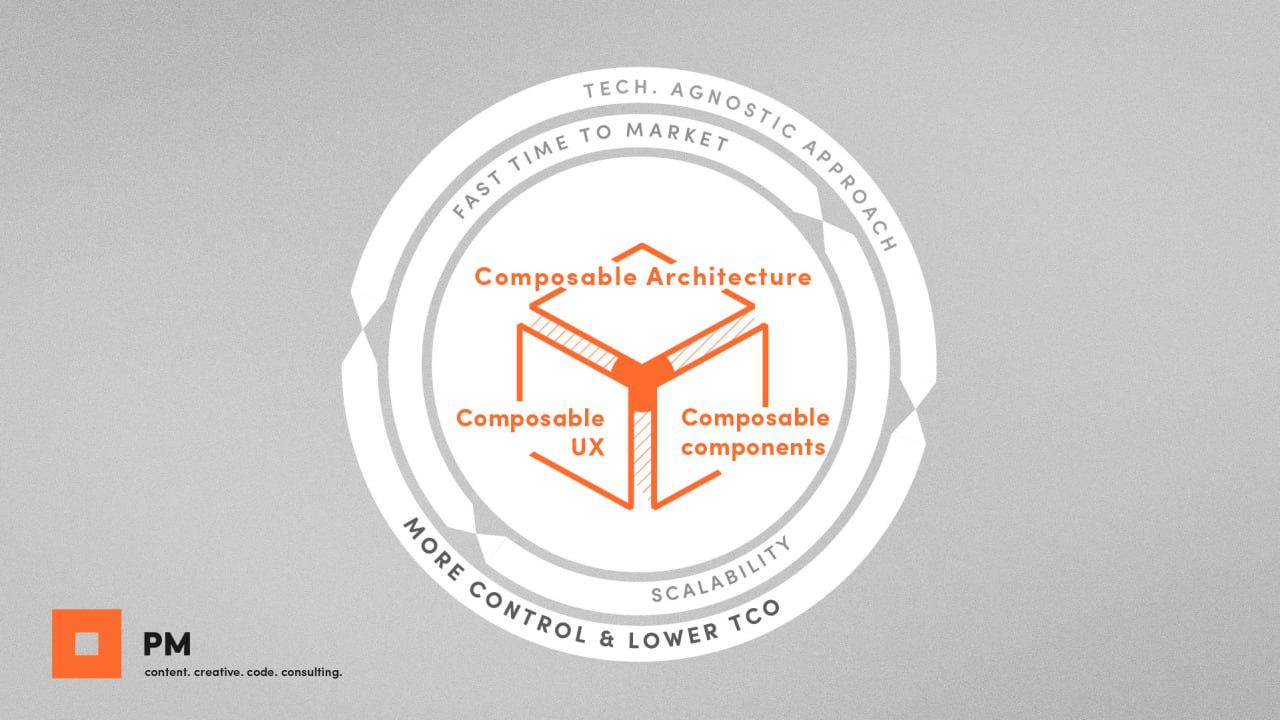
Complete renewal of the Wise.blue web portal
Client: HTTPOOL, d.o.o.
With its platform for effective advertising, Wise.blue offers a global solution for advertisers and agencies to get better results on Twitter.
More
Composable web architecture is an approach to web development that emphasizes the use of modular, reusable components to create websites and web applications. Instead of building everything from scratch, it allows developers to assemble pre-built features, APIs, and services into a cohesive whole. It enables teams to create complex web applications by combining multiple microservices in a modular and scalable way.
For digital marketing solutions, composable web architecture offers several key benefits, which we will explore in this article.
In today’s fast-paced business environment, it’s crucial to be able to react to changing customer needs and market demands as quickly as possible. Composable web architecture enables faster time to market by establishing a pipeline where you can find, develop and deploy solutions quickly.
For example, if you want to add authentication to your website, you can integrate a provider like Azure Active Directory instead of developing this feature from scratch. This allows you to focus on customizing Azure AD to your business and customer needs, rather than spending time on low-level coding tasks.
Personalization and customization are key to creating great user experiences. With composable web architecture, you can create customized experiences tailored to the needs and preferences of your target audience.
For example, you can set up a deploy pipeline that allows for adjustments to the user experience. Use components as a source of truth in a design tool (e.g. Figma) and implement them in your frontend stack. With a well-documented feature set, implementing changes from design to development should be easy, allowing you to quickly adjust and personalize your UX.
One of the main benefits of composable web architecture is its scalability. You can employ only what you need now and add services and computing power on the go. Developers can easily add or remove services without needing to make major changes to the underlying architecture. This way, it’s easy to adapt to the changing needs of your business. This also enables businesses to handle spikes in traffic without experiencing downtime or performance issues.
Composable web architecture allows you to leverage the best tool for each problem. Instead of relying on monolithic tools that pack multiple mediocre solutions into one product, you can use tools that are specifically designed to solve one problem very well.
For example, you can use Stripe as a payment gateway, SendGrid as an email provider, and other specialized tools for different tasks. By integrating these tools via APIs, you can create a seamless user experience without sacrificing performance or reliability.

By leveraging pre-built services, businesses can also benefit from improved security and reliability. These services are often designed and maintained by experts in their respective fields, ensuring that they are secure, reliable, and up-to-date with the latest industry standards and best practices. This can help businesses avoid costly security breaches and downtime, and ensure that their web applications are always available to their customers.
Composable web architecture also promotes collaboration and improves the developer experience. You can integrate tools that everyone loves, outsource the most hideous jobs, and allow team members to focus on what brings them joy - building a better product.
For example, by using a developer platform like Netlify, you can create a workflow that allows developers to work on individual modules simultaneously, resulting in a more efficient and streamlined development process. This allows businesses to launch their web applications faster and with greater ease.
Another benefit of composable web architecture is that it minimizes vendor lock-in. Each service that you outsource is a vendor lock-in by itself, but by integrating with APIs, your features are distributed, making it easier to replace a service if necessary.
For example, if you’re using Cloudinary for digital asset management, you can switch to another service if you find that Cloudinary is no longer meeting your needs. This flexibility allows businesses to stay agile and responsive to changing market conditions.
While composable web architecture offers many benefits, it also presents some challenges that need to be considered. One of the main challenges is the complexity of managing multiple microservices and ensuring they work together seamlessly. This requires a high level of technical expertise and coordination between team members.
Security is also a concern when working with multiple providers. With more services come more potential vulnerabilities, which can lead to security breaches. It is essential to ensure that each service is adequately secured and that data is protected throughout the entire system.
Finally, while composable web architecture allows for great flexibility, it also requires more advanced planning and design. Developers must consider how each service will interact with the other and how data will be transferred between them. Failure to do so can result in poor system performance, unexpected outages, and increased technical debt.
Composable web architecture offers a new way of thinking about web development that can help businesses achieve better results in digital marketing. By leveraging the power of modular components and pre-built services, businesses can create faster, more agile, and more efficient websites than ever before. If you are a digital marketing expert, executive, web developer, or technical project manager, it is worth considering composable web architecture as a way to take your digital marketing efforts to the next level.
Next article
Client: HTTPOOL, d.o.o.
With its platform for effective advertising, Wise.blue offers a global solution for advertisers and agencies to get better results on Twitter.
More